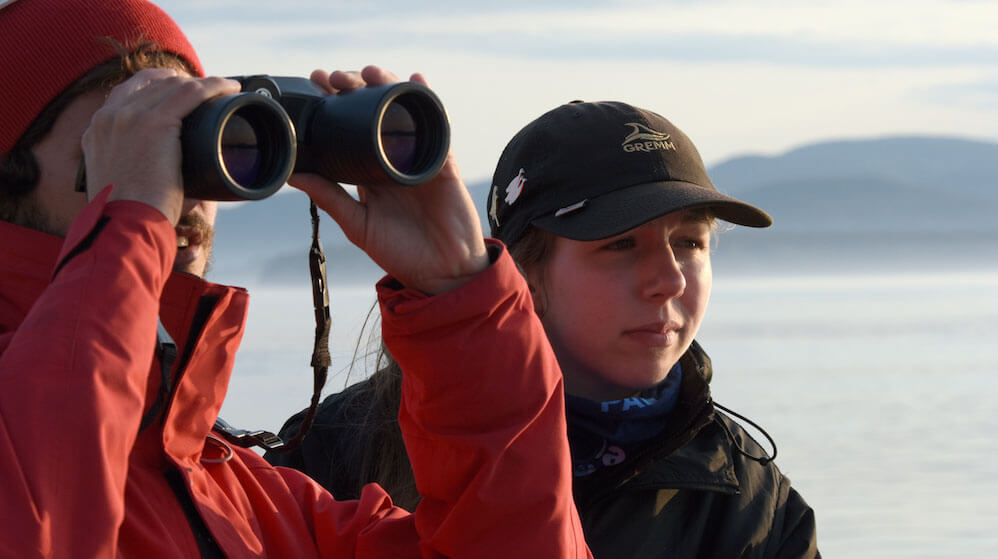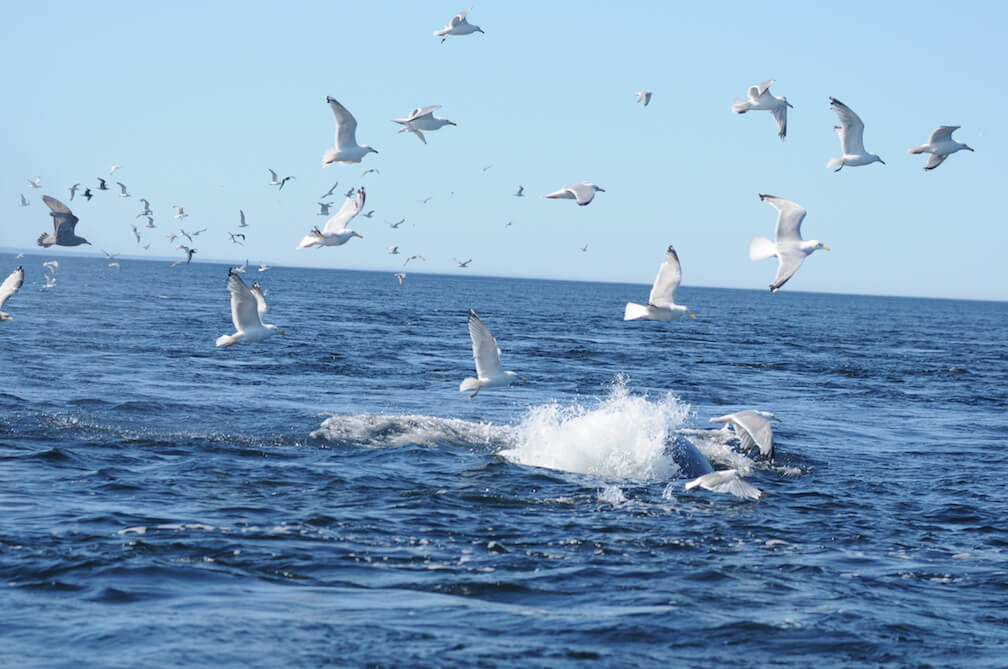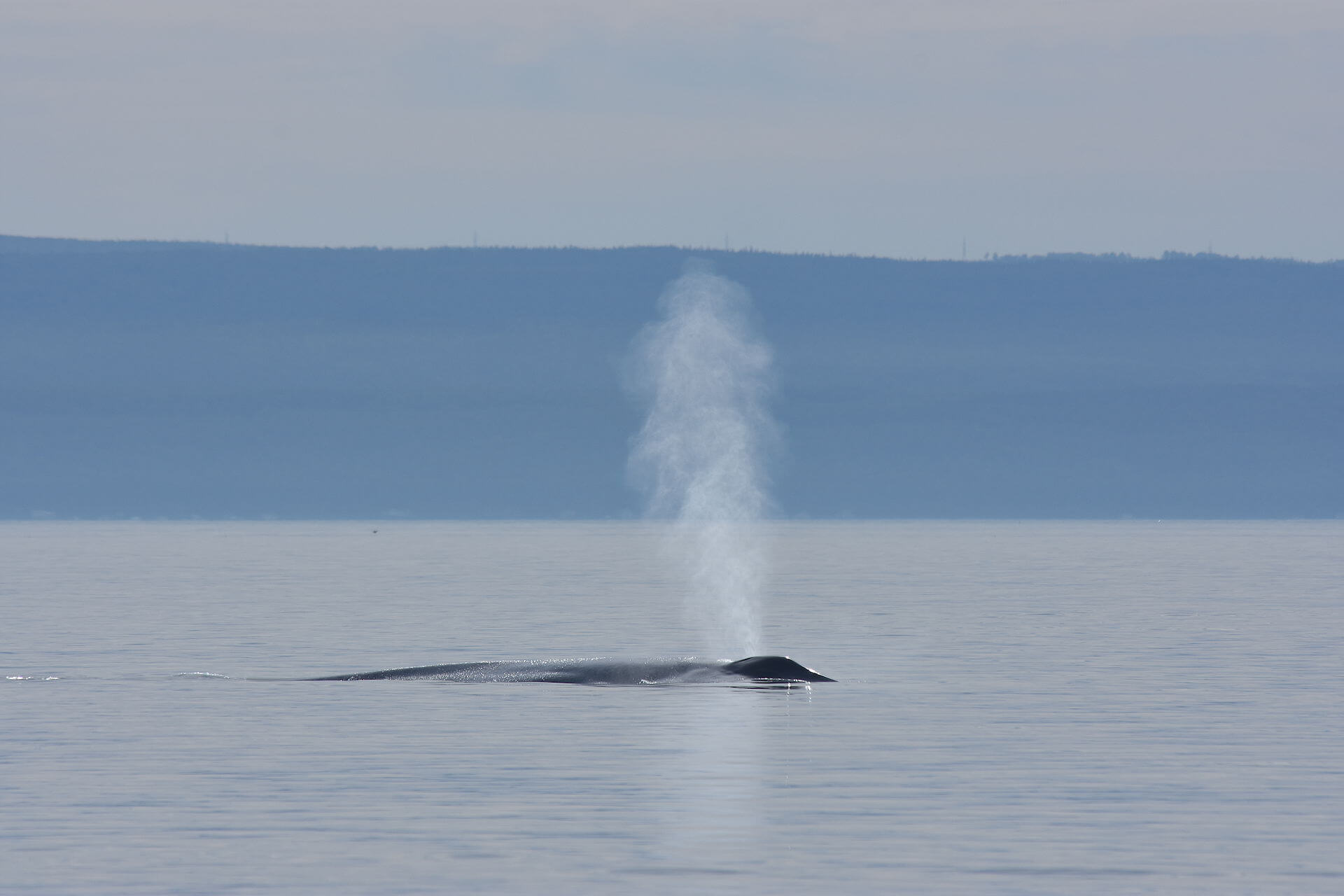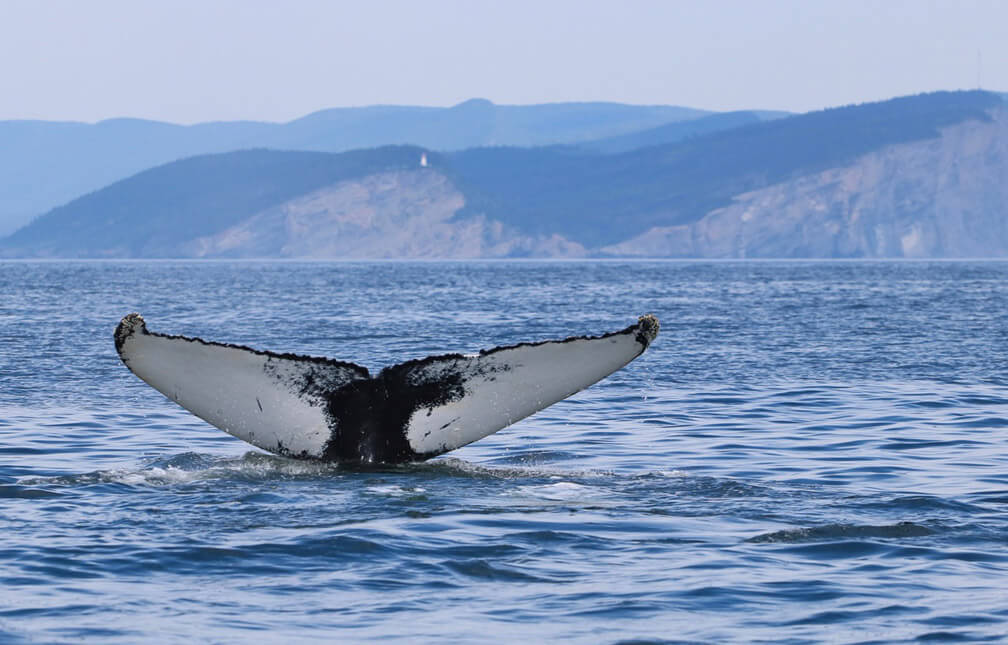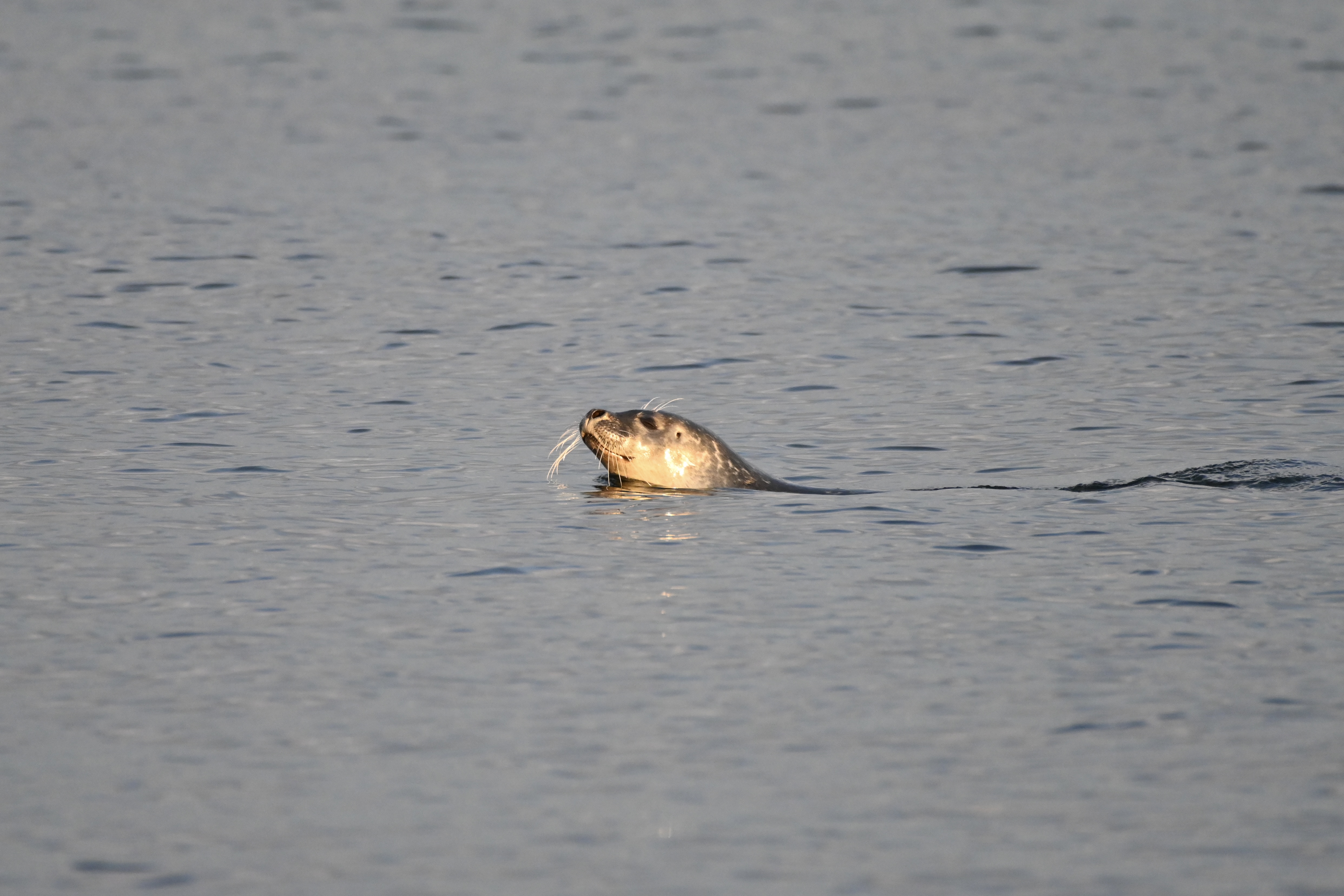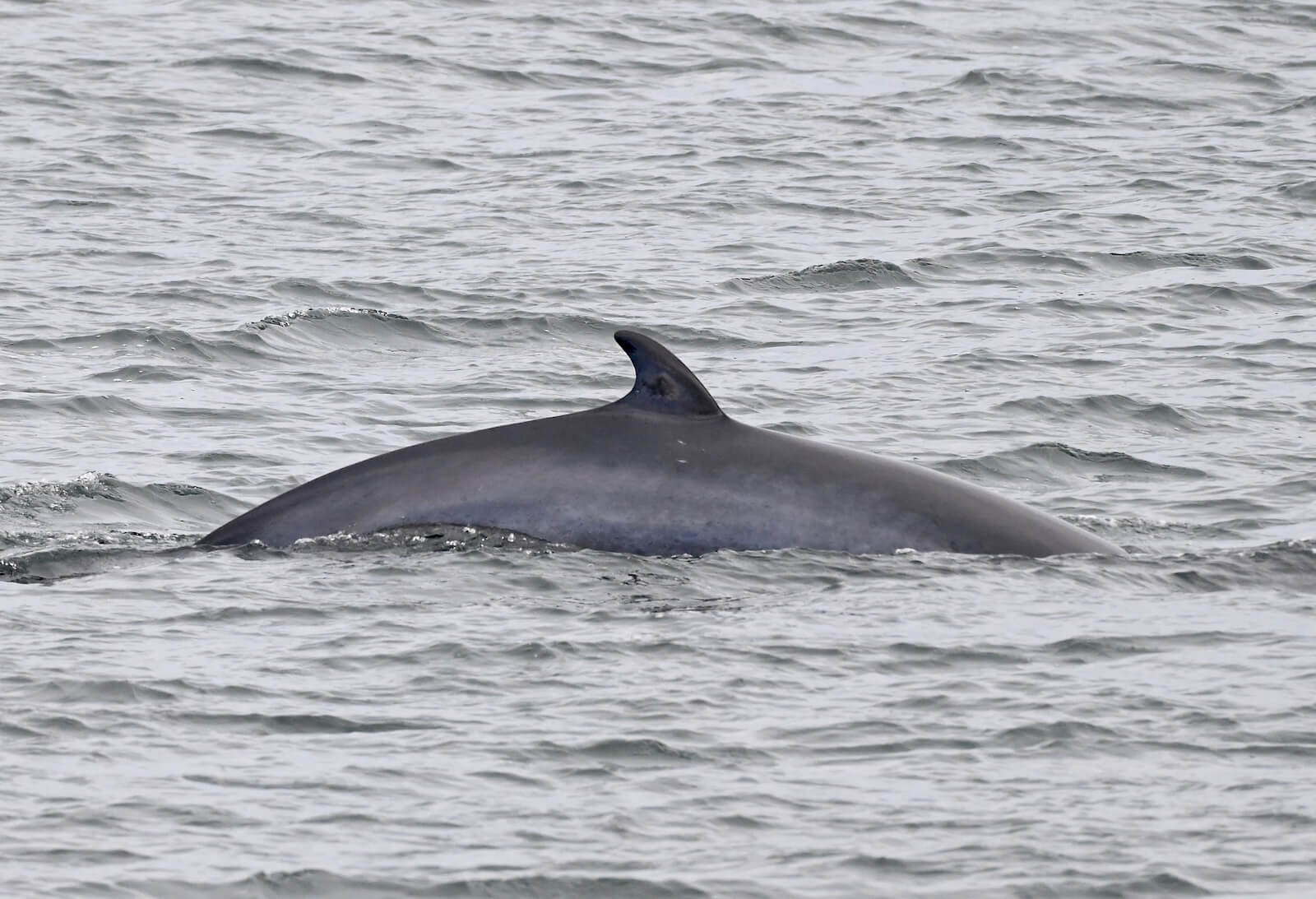Open your eyes... and your ears
Despite their impressive size, whales can go unnoticed by a distracted observer. Indeed, they only need a few seconds on the surface to breathe and can then remain under water for many long minutes.
To maximize your chances of spotting whales, it’s important to keep your eyes on the water and scan the horizon. If a whale is in the area, a spout or a back emerging above the water surface might catch your attention. Binoculars can sometimes facilitate sightings of whales in the distance, but they are no substitute for the naked eye, which provides a much wider field of view.
Foggy weather or a blazing sun? Your ears become like a second set of eyes. Whales’ spouts, their vocalizations and unusual movements of the water can clue you in to the presence of these marine mammals.

